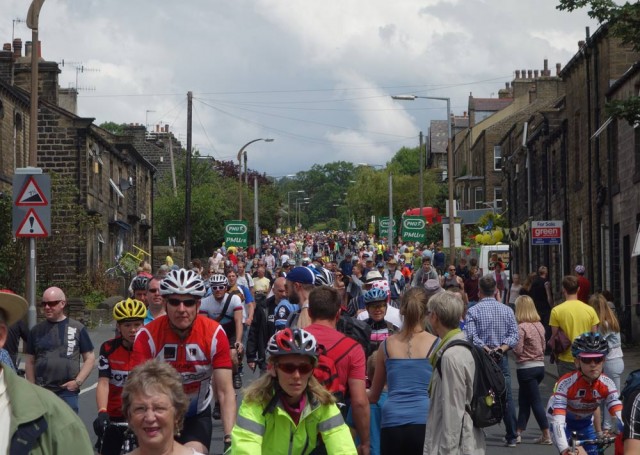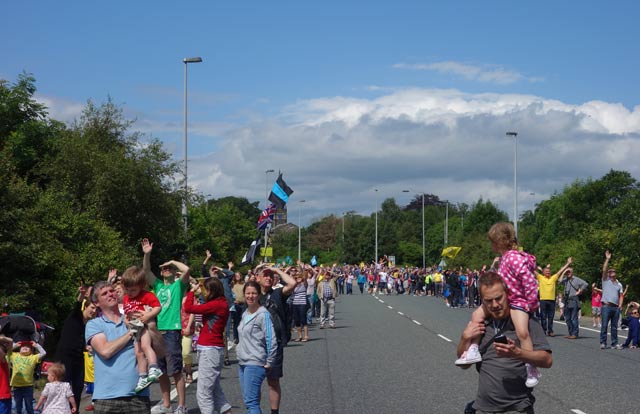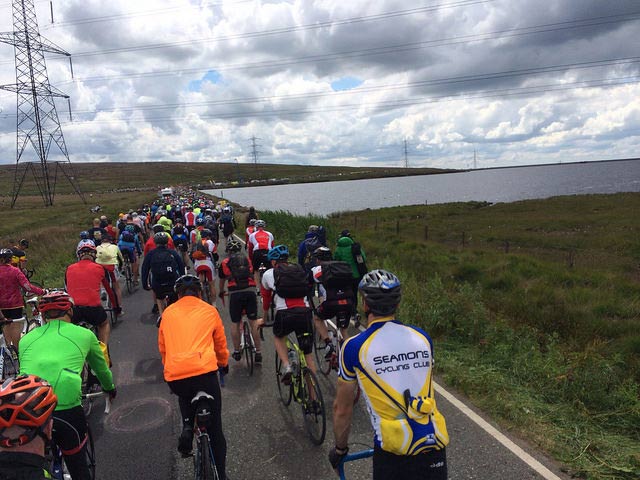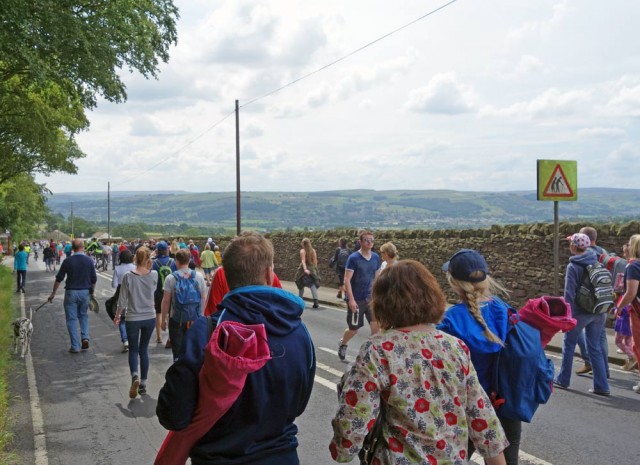Everyone seems to agree that the Tour de France in Yorkshire / England was an unprecedented success. But, will it be a one hit wonder or will the legacy of the tour help boost the long term profile of cycling in the UK?
As the tour swept through Britain, you could see potential seeds of a real cycling legacy which could offer many benefits to the nation. And these could be real benefits like improved health, reduced pollution, greater community spirit – benefits which definitely surpass just an understanding of what an echelon is, or what the yellow jumper means.
Some potential benefits of Tour de France legacy include:
Closed roads are liberating

Usually we’re in a rush to get somewhere and the car is king. Because we’re in a rush we end up sitting in nice long traffic jams getting frustrated. The Tour de France was an opportunity to reclaim the streets, bringing whole communities together. People were having a great time. I’ve never seen so many happy people, not bad to say the action lasted only 30 seconds. In an age of digital communities and instant messaging, it is a relief to remind ourselves that nothing can beat going out into the world and meeting real people. I even broke a habit of lifetime and started talking to strangers by the roadside. The millions by the roadside show that it wasn’t just the attraction of seeing some lycra fleeting by – we actually love an excuse to be part of something big.

The Tour was a good example of how there is life after the motorcar and busy streets. It was definitely helped by good weather and having the Tour de France come through, but it shows there’s a lot to be said for creating towns where people can walk, cycle and chat and not just wait for articulated lorries to fly past and the pelican lights to change. Sundays would make a great time to have more road closures. Life doesn’t end if you can’t drive 24 hours a day, 7 days a week.

photo Lynne / Andy / Ewan
After the Tour passed through Burley bypass, an old man put his deckchair on the middle of the white line and proudly posed for a photo! It was a great image, and symbolic of the day the roads got closed.
Cycling is great fun

The Tour encouraged many thousands of people to dust off the bicycles from the garage and cycle. Cycling 20 miles to watch the tour was the best way to get around and it really was great fun to take part. Sometimes, the hardest thing with cycling is getting started. But, once you get on the bike you realise that many of your fears about cycling aren’t so bad after all. The Tour is hopefully that kick-start that many people needed to remind themselves of the joy of cycling. To build on this initial burst of activity, we will hopefully have more events which encourage greater cycling participation from across the population spectrum.
Positive media coverage helps a lot
A refreshing thing about the Tour de France was that the media coverage was generally all positive. There were barely any mentions of the usual sticks to hit cyclists with (like red light jumpers e.t.c.). The main criticisms were reserved for the narcissist fans who wanted to stand in the middle of the road taking a selfie / photo with their back turned to the 200+ peleton. Hopefully, the selfie is one craze which will not become a legacy.
Where there’s a will there’s a way
Often we are told, good cycle lanes and cycle provision would all be very nice, but unfortunately it’s not really practical or possible. However, bringing the Tour de France to Yorkshire shows everything is possible – when the will and determination is there.

– A day before the sprint finish in Harrogate and Harrogate County Council dig up a set of traffic lights which are in the middle of the road. In the week preceding the Tour, I’ve never seen so many potholes filled in – in such a short space of time. If you value something, you can always find a way to do it. If there is the determination to create more cycle / pedestrian friendly cities, it can happen. If you can create an event with 5 million spectators, you can find a way to provide some decent cycle paths through a busy city.
Long evolution of cycling improvements
The Dutch didn’t get their cycle network overnight. It came about through years of steady improvement. As you get more people to see the benefits of cycling, it becomes easier to implement cycle friendly legislation. The Dutch succeeded because they reached a tipping point, where the majority of the population became favourably inclined towards cycling. The UK has started from a very low basis, but you feel the Tour has helped increase the % of the population which has a generally favourable attitude to cycling. There’s no quick fix, but in a democracy you have to keep working to increase the percentage of the population who are favourably disposed to cycling.
Anything the French can do, we can do just as well – if not better!
“I can see the Tour in their hearts, and in their eyes. For that, I say thank you to everyone in Yorkshire who has made this Grand Depart so very, very special.”
Christian Prudhomme
Related

